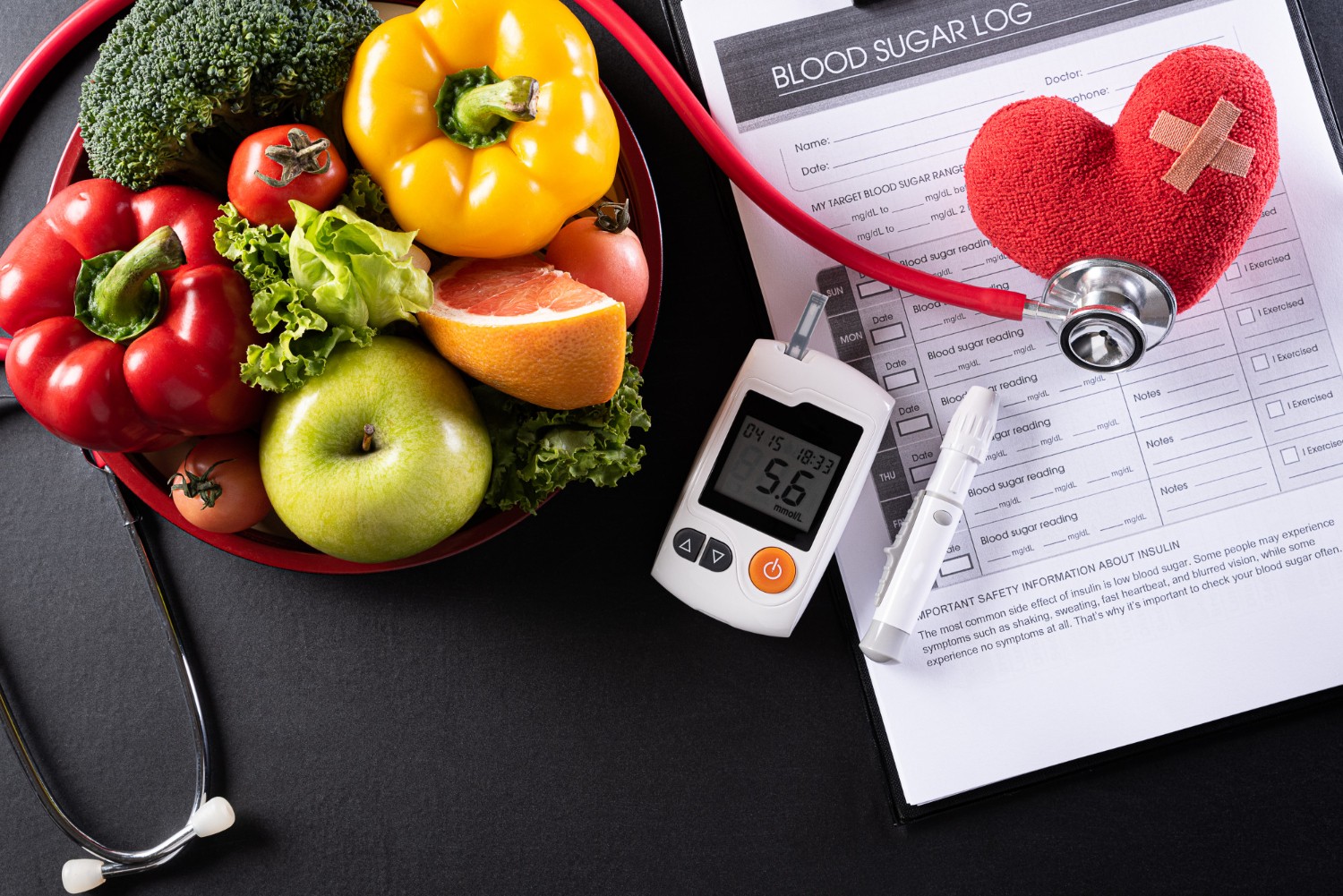Myths are like fake WhatsApp messages that sound extremely factual but, in reality, they are too good to be believed!!
Have you heard that eating neem leaves can help you bring down your blood sugar levels? Or maybe someone suggested you a new fad diet that devoid you of all your favourite foods? When it comes to health, especially diabetes, there’s no shortage of advice.
Over time, it is also quite natural for diabetics to become desperate and try out many different things that promise to reduce blood sugar levels and bring in some normality in their lives. It can be as extreme as eating raw leaves, crash dieting, chewing seeds, walking for 8 hours and many more.
But, with so much information floating on the Internet and around, it often becomes difficult and overwhelming for diabetics and their families to separate facts from fiction and integrate proper diabetes care into their daily life.
That’s why, despite the availability of evidence-based guidance, many diabetics are still not able to achieve the desired health goals like the recommended glycaemic index (GI), cholesterol, and blood pressure levels. It is estimated that only one-third of people with diabetes are able to effectively manage their disease, while more than half report significant distress related to their illness and its management.
Unless these myths are identified and busted, it is extremely difficult for diabetics to manage the disease or ensure its reversal – which is very much possible.
Below, we debunk 9 common diabetes myths.
Diabetes Diet Myth 1: You can cure diabetes by eliminating sugar
The most common myth among diabetics (22%) is that eating sugar causes diabetes. Sugar is often seen as the enemy no. 1 and the first thing that people do after being diagnosed with diabetes is that they start avoiding sugar.
Most believe that by just eliminating sugar from their diet, they can lower their blood sugar levels. But, in reality, it is the Glycaemic Load (GL) of the total food that affects your blood sugar, and not just its sweet content.
Did you know every food has its own Glycaemic Load? The GL of 2 tablespoons of sugar is 5.2 while the GL of 2 Marie biscuits is 7.0, which many people consider safer than other sweet biscuits.
So eliminating sugar completely from your diet is not how diabetic care works.
Diabetes Diet Myth 2: Eating excess sugar can’t cause Diabetes.
If your pancreas and insulin secretion is healthy and you have no family history of diabetes, then eating excess sugar (sugary food and drinks) can’t cause diabetes
Ayurveda science states that we all have our unique metabolic speeds, which are based on our body types (Vata, Pitta and Kapha). Kapha is slow, pitta is fast, and Vata is considered to have variable metabolism.
When a Kapha individual with slow metabolism takes excess sugar for a long time, an imbalance between the rate of utilization and the amount ingested happens. This leads to the accumulation of an extra layer on the cell wall around the cells, which causes Insulin Resistance (first stage diabetes).
World Health Organization recommends up to 6 teaspoons of sugar per day as safe. But again it has to be seen in the light of a specific Body Type to make sure it’s still a Safe Zone.
So don’t just load up on the sugar, learn to tame that sweet tooth and enjoy a diabetes-free life.
Diabetes Diet Myth 3: Jaggery is a safe replacement for sugar
A lot of misinformation is spread around jaggery. Many people believe that it is a safe replacement for sugar and something that diabetics can happily enjoy. This, in fact, causes some serious hindrances in diabetic management.
The Glycaemic Index (GI) of jaggery is actually higher (GI 86) than sugar (GI 65), and jaggery raises our blood sugar levels faster than sugar. Even in terms of calories, it is similar to sugar (380 kcal/100 gm). So no specific advantages here either.
So diabetics should use jaggery in combination with other very low sugar load (Glycaemic Load) ingredients in order to maintain their daily sugar levels.
Diabetes Diet Myth 4: Protein doesn’t raise blood sugar, so fill up the plate
Carbohydrate is considered as the body’s most efficient fuel source since our body requires less oxygen to burn carbohydrates as compared to protein or fat. When we avoid carbohydrates, we are asking our body to use protein as its primary fuel source.
This will deplete the protein store quickly and there won’t be enough protein to repair cells and damaged tissues. But cell and tissue damage is an ongoing process. As a result, the muscles will degrade, and the person will tend to become weak over time.
People with Vata (Ectomorph) body types also find it harder to break down a high protein diet.
Similarly, people with a higher risk of diabetic nephropathy (Kidney disease) have a different requirement of protein as compared to a non-nephropathy diabetic individual or those from a GDM (gestational diabetes mellitus) mother.
So the key to successful diabetes management is to know your Diabetic condition and body type (Provide a link to Body Type Web form) precisely and then plan a balanced diet, instead of following a random monotonous diet (protein only) plan.
Diabetes Diet Myth 5: Fenugreek drink early morning controls sugar
Fenugreek seeds (Methi) are high in soluble fibre, which helps in lowering blood sugar by slowing down digestion and absorption of carbohydrates. However, taking them early morning on an empty stomach may not give you the best results. When taken in large doses, fenugreek seeds might cause gas and bloat in pitta (mesomorph) body types.
The right way is to take them about 30 minutes before breakfast.
Diabetes Diet Myth 6: You should opt for special diabetic-friendly foods
Diabetic foods are way more expensive than your regular food items. Neither do they taste good nor do they help you achieve the desired results. So, with diabetes, you need to opt for smart cooking methods and simple meal planning without sacrificing important aspects of your care.
For example, a person might be able to reduce his sugar loading by 15% by just changing the cooking process. Cooking rice by following the boil-and-drain method reduces sugar spikes than the rice cooked in a pressure cooker.
Healthy diabetes nutrition can come from your regular food habits themselves, with some changes.
Diabetes Diet Myth 7: Eating sweet fruits raise blood sugar
Sugar in most fruits is Fructose. Fructose produces a smaller postprandial rise in plasma glucose than other common carbohydrates. Also, having a piece of fresh fruit is better than fruit juices with added sugar and no fibre.
But just because fruits are healthy, don’t overeat. Limit them to a few servings as they also contain carbohydrates.
Eat fruits in your snack time and not with meals. Go for seasonal fruits as they are loaded with micronutrients required in that season.
Diabetes Diet Myth 8: People with diabetes should completely avoid carbohydrates like rice
Though carbohydrates are present in a variety of foods (including fruit and vegetables), they are also important sources of nutrients. Hence, it is not practical to totally avoid carbohydrates and other staple foods.
Going on a very low carb diet increases the risk of hypoglycaemia (low blood sugar).
Instead of just avoiding staple foods, modify the composition and structure of the food to reduce the amount of carbohydrates ingested or alter the starch digestibility and glucose absorption rates by using different food ingredients and processing methods.
Diabetes Diet Myth 9: Sugar-free foods are diabetes-friendly
Did you know the carbohydrate content of a sugar-free biscuit can be 20% higher than a normal biscuit pack? That’s because the sugar content in these foods is replaced with refined flours to make up for the weight/volume.
Starch is not sweet, but it will also raise blood sugar.
We don’t realize that carbohydrates turn into sugar. These foods will affect our blood glucose just as sugar-containing food would. Of course, not all carbohydrates are equal.
Therefore, it is important to read the nutritional labels carefully to make sure that you’re eating what you think you’re eating!
The Bottom Line
Decades of health myths have influenced consumer decisions.
However, when it comes to food, there’s no “one size fits all” answer — everyone is different because everyone’s body is different. The amount you can eat and you need to stay in your target blood sugar range depends on your age, weight, activity level, and other factors.
So, keep yourself informed by researching what you see and reach out to a diabetic specialist for appropriate health advice. Only a health expert can provide you with the correct answers to the questions or queries that you may have.
Stay healthy, happy, and well-informed!!








